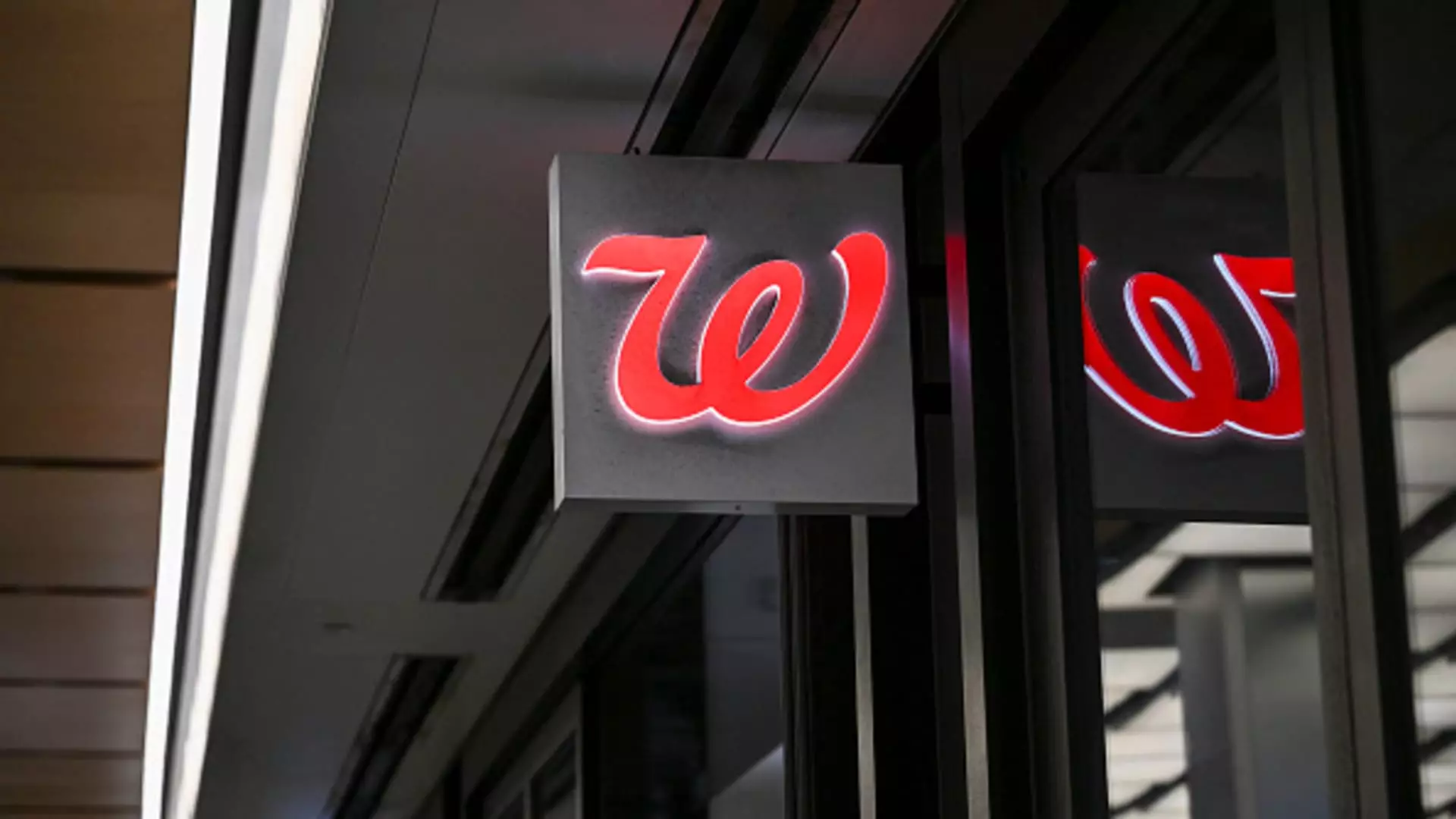Walgreens finds itself at a critical juncture that marks an unexpected turn in its nearly century-long history as a public entity. The recent announcement of a fiscal second-quarter performance that exceeded market expectations is a testament to the urgent behind-the-scenes maneuvers taking place within the company. On one hand, it showcases revenue and earnings that saw a slight uptick, while on the other, the shadows of significant challenges loom ever larger. The impending deal to go private, facilitated by Sycamore Partners at an astonishing $10 billion, reveals deeper fissures beneath the surface, reminiscent of a once-thriving giant that is now grappling to find its footing amidst fierce competition and operational disruptions.
Cost Cutting: A Double-Edged Sword
While Walgreens’ claims of disciplined cost management might resonate positively in the eyes of investors, this approach raises serious concerns about the long-term viability of the brand. The decision to shutter multiple stores indicates more than just strategic realignment; it signals a frantic response to mounting pressure from competitors like CVS, Amazon, and brick-and-mortar retailers that are continuously innovating in the pharmacy space. Such drastic measures could alienate loyal customers, disrupt community access to vital health services, and ultimately erode Walgreens’ brand identity. Is trading short-term gains for long-term customer loyalty a wise strategy, or is it a clear signal of desperation?
Fiscal Reality Check: Losses Mount While Cost-Cutting Continues
The stark contrast between Walgreens’ reported financial outcomes is jarring. Although the company has managed to achieve $38.59 billion in sales—up by 4.1% year-over-year—its net loss of $2.85 billion raises eyebrows. This contradiction illustrates the complexity of the business environment Walgreens finds itself in, characterized by pressures from pharmacy reimbursement challenges and weakened consumer spending. The company’s legal settlements, particularly those related to opioid lawsuits, further complicate its financial landscape. It’s evident that while revenues may appear to climb, the underlying health of Walgreens’ finances tells a much grimmer story.
Health Care Ventures: An Uphill Battle
Walgreens’ foray into health care, particularly through its investment in VillageMD, presents a perplexing paradox encapsulated by a major write-down. This inextricable link between ambitious health initiatives and financial losses poses a critical question: can Walgreens realistically navigate the labyrinth of health care without losing its core identity as a pharmacy? With a staggering $4.2 billion charge affecting its balance sheet, the risk associated with these ventures appears insurmountable. The reality is that venturing into health care isn’t merely about monetary investment; it requires a recalibration of the company’s ethos and mission, a challenge that Walgreens may not be equipped to handle effectively.
The Stock Market’s Response: A Resilient But Troubled Outlook
Despite posting a significant net loss and withdrawing its fiscal guidance, Walgreens did experience a brief increase in stock price, which highlights a disconnect between market optimism and the realities of corporate performance. This rise can be attributed to short-term investor sentiment rather than a genuine reflection of Walgreens’ future viability. It underscores a systemic issue in the stock market—an inclination to overlook deep-rooted problems as long as there appears to be positive news, however superficial.
Looking Ahead: A Hard Road to Recovery
Moving forward, Walgreens CEO Tim Wentworth’s remarks about the initial stages of a turnaround plan seem optimistic but also overly simplistic given the gravity of the challenges ahead. Realistically, creating “meaningful value” in a tumultuously changing landscape where the retail pharmacy model is being redefined by technological advancements and shifts in consumer behavior will require more than cautious optimism; it necessitates a bold strategy that prioritizes sustainable growth rather than quick fixes. Walgreens must ask itself whether it is still capable of being the community pharmacy it once was or if its future lies solely within the arena of privatized enterprises.
The transition may seem smooth on the surface, but beneath it, Walgreens is grappling with waves of uncertainty. The stakes are high, and the questions looming larger than ever: Is Walgreens ready to face the harsh realities of a rapidly evolving retail landscape, or is it merely biding its time as it prepares to exit the public arena?


Leave a Reply